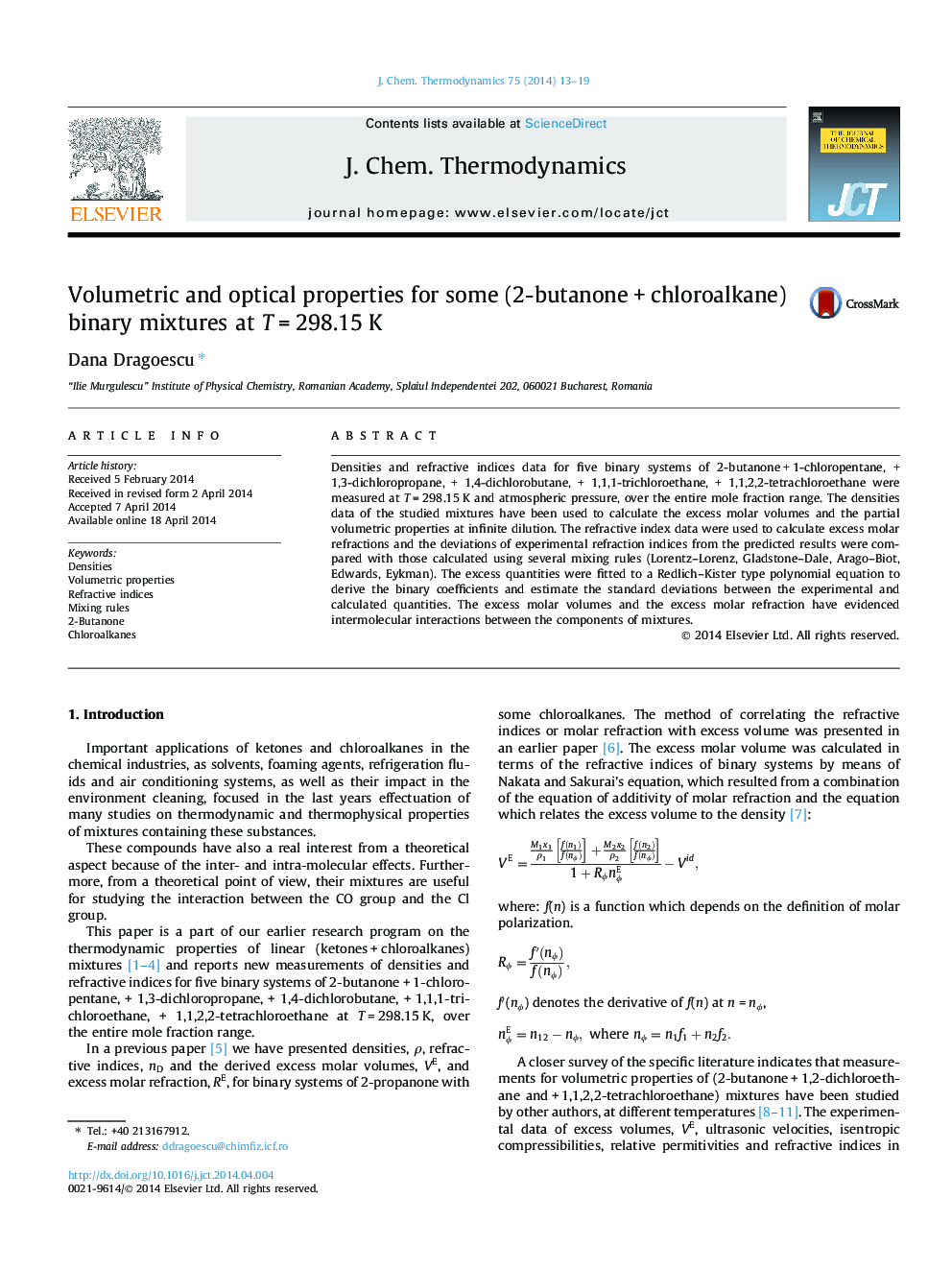| Article ID | Journal | Published Year | Pages | File Type |
|---|---|---|---|---|
| 215541 | The Journal of Chemical Thermodynamics | 2014 | 7 Pages |
•Densities and refractive indices data for binary systems of 2-butanone + chloroalkane were reported.•The densities data were used to calculate the volumetric properties.•The refractive index data were used to calculate the excess molar refractions.•The experimental data were used to test the validity of different refractive index mixing rules.
Densities and refractive indices data for five binary systems of 2-butanone + 1-chloropentane, + 1,3-dichloropropane, + 1,4-dichlorobutane, + 1,1,1-trichloroethane, + 1,1,2,2-tetrachloroethane were measured at T = 298.15 K and atmospheric pressure, over the entire mole fraction range. The densities data of the studied mixtures have been used to calculate the excess molar volumes and the partial volumetric properties at infinite dilution. The refractive index data were used to calculate excess molar refractions and the deviations of experimental refraction indices from the predicted results were compared with those calculated using several mixing rules (Lorentz–Lorenz, Gladstone–Dale, Arago–Biot, Edwards, Eykman). The excess quantities were fitted to a Redlich–Kister type polynomial equation to derive the binary coefficients and estimate the standard deviations between the experimental and calculated quantities. The excess molar volumes and the excess molar refraction have evidenced intermolecular interactions between the components of mixtures.
